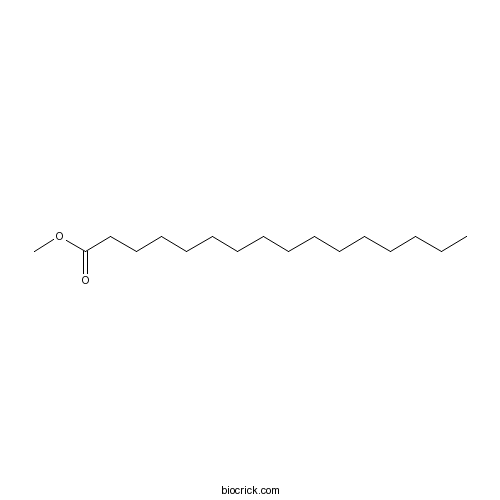Iris tenuifolia
Iris tenuifolia
1. The products in our compound library are selected from thousands of unique natural products; 2. It has the characteristics of diverse structure, diverse sources and wide coverage of activities; 3. Provide information on the activity of products from major journals, patents and research reports around the world, providing theoretical direction and research basis for further research and screening; 4. Free combination according to the type, source, target and disease of natural product; 5. The compound powder is placed in a covered tube and then discharged into a 10 x 10 cryostat; 6. Transport in ice pack or dry ice pack. Please store it at -20 °C as soon as possible after receiving the product, and use it as soon as possible after opening.
Natural products/compounds from Iris tenuifolia
- Cat.No. Product Name CAS Number COA
-
BCN8290
Methyl hexadecanoate112-39-0
Instructions

Ethanol Iris tenuifolia extract reduces brain damage in a mouse model of cerebral ischaemia.[Pubmed: 29168254]
In the previous experiments, the neuroprotective role of Iris tenuifolia Pall. (IT) in the model of middle cerebral artery occlusion (MCAO) was investigated. In addition, the concentrations of the cytokines tumour necrosis factor-alpha and interleukin-6 in blood plasma were measured. It was found that IT administered 1 hr prior to MCAO or immediately after MCAO reduced infarct volume significantly. IT application 1 and 4 hr after MCAO, respectively, was without any effect on infarct volume. There were no significant changes as regards tumour necrosis factor-alpha, whereas interleukin-6 concentrations were increased in blood plasma. This is the first evidence that flavonoids from Iris tenuifolia exert protective effects in the in vivo MCAO model. Our results suggest that these flavonoids are likely to be beneficial to humans by virtue of their ability to reduce infarct volume.
Phosphatase-mediated intracellular signaling contributes to neuroprotection by flavonoids of Iris tenuifolia.[Pubmed: 24467539]
A variety of flavonoids are suggested to be useful for the treatment of brain-related disorders, including dementia and depression. An investigation on the characteristics of the extracted compounds of Iris tenuifolia Pall. (IT) is of much interest, as this plant has been used as a traditional medicine. In the present study, we examined the effect of total flavonoids obtained from IT on cultured cortical neurons under oxidative-stress and found that pretreatment with IT flavonoids significantly inhibited H 2 O 2-induced cell death in cortical neurons. Such a survival-promoting effect by IT flavonoids was partially blocked by inhibitors for extracellular signal-regulated kinase (ERK) and phosphoinositide 3-kinase/Akt (PI3K/Akt) cascades, both of which are known as survival-promoting signaling molecules. Furthermore, the phosphorylation of Src homology-2 (SH2) domain-containing phosphatase2 (Shp2) was induced by IT flavonoids, and the protective effect of IT flavonoids was abolished by NSC87877, an inhibitor for Shp2, suggesting the involvement of Shp2-mediated intracellular signaling in flavonoid-dependent neuroprotection.
Flavans from Iris tenuifolia and their effects on β-amyloid aggregation and neural stem cells proliferation in vitro.[Pubmed: 21737268]
Two new flavans (1, 2) and a new flavanone (3), together with three known compounds (4-6), were isolated from the roots of Iris tenuifolia. Their structures were elucidated by means of spectroscopic methods including 1D and 2D NMR techniques and mass spectrometry. Compounds 1, 4, and 6 were further confirmed by single-crystal X-ray diffraction analysis. Biological evaluation showed that compounds 1 and 4 were positive in inhibiting β-amyloid (Aβ) aggregation and promoting neural stem cells (NSCs) proliferation, respectively.
A benzil and isoflavone from Iris tenuifolia.[Pubmed: 18472117]
Two compounds, tenuifodione (1) and tenuifone (2), and 12 known compounds, izalpinin (3), alpinone (4), arborinone (5), irilin B (6), irisone A (7), irisone B (8), betavulgarin (9), beta-sitosterol (10), 5,7-dihydroxy-2',6-dimethoxyisoflavone (11), 2',5-dihdroxy-6,7-methylenedioxy flavanone (12), irisoid A (13) and ethyl-beta-d-glucopyranoside (14) were isolated from the whole plant of Iris tenuifolia Pall. All compounds, except 12, were isolated for the first time from this plant. Compounds 2, 3 and 11 have shown a considerable DPPH radical scavenging activity. Structures of these compounds were identified on the basis of spectroscopic techniques, including 2D NMR. Compounds 3, 5 and 7 were also subjected to single-crystal X-ray diffraction analysis and their structures were unambiguously deduced.


